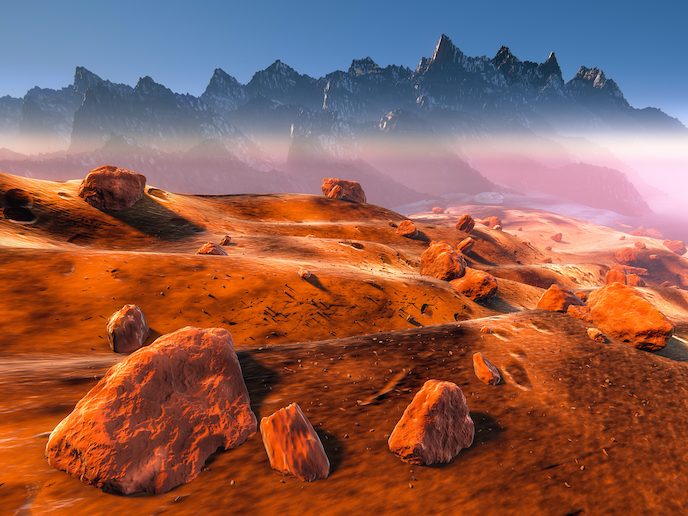The search for life on Mars begins on Earth
When it comes to uncovering the Earth’s history, there’s really nothing better than a good rock. Not only do rocks provide us with important information about our planet’s changing geology, they sometimes even contain evidence of ancient life. They are also our best hope for answering one of the most compelling questions in science: was there ever life on Mars? “Although we know that the Earth’s subsurface contains a huge number of organisms, we don’t know how this deep biosphere has changed over geological time or what kind of fossils it might have left in the rocks,” points out Sean McMahon(opens in new window), a geoscientist at the University of Edinburgh’s UK Centre for Astrobiology(opens in new window). “This means we don’t know how to look for evidence of deep subsurface life on Mars or other planets.” Through support from the Marie Skłodowska-Curie programme and EU funding for the D BIOME project, McMahon has expanded his search for traces of ancient life in rocks from Earth that resemble those from Mars. “This project aims to advance our understanding of microorganisms like bacteria living in pores and fractures deep beneath the surface of the Earth and, hypothetically, other planets,” adds McMahon.
Recognising fossils in Earth rocks
Around the world, space programmes like the European Space Agency(opens in new window) (ESA) are preparing robotic missions to search for fossils on Mars. However, for the vast majority of history, Mars has been extremely cold, dry, caustic and irradiated. “The surface of early Mars was habitable, but conditions deteriorated more than 3 billion years ago, meaning if there was life after that it may have been sheltered deep underground where geothermal heat could keep water flowing,” explains McMahon. “It is far too expensive to dig kilometres into Mars, but we can look for fossils in minerals formed deep underground that later became exposed at the surface.” Hence the importance of being able to recognise and understand fossil microorganisms in rocks here on Earth. To advance this understanding, McMahon studied fossil material using microscopes and high-resolution analytical techniques. He also conducted experiments to learn how bacteria become fossilised and calculations to estimate the biomass in subsurface environments over time. “This work suggests that for most of Earth’s history, the planet’s biomass has been hidden away underground,” notes McMahon. “We also opened the door to seeking fossil and chemical evidence for ancient subsurface life in certain mineral veins that have already been discovered on Mars.”
Advancing science’s search for subsurface life
A somewhat unexpected outcome of the project was a showing of just how difficult it is to recognise deep subsurface fossils. This is because certain chemical reactions can produce tiny structures that look just like microfossils but in fact have nothing to do with life. “Although this is certainly frustrating, in the end the cryptic nature of these materials is important information for astrobiology,” explains McMahon. “For example, if we found them on Mars, we would not want to use them as evidence of life.” Despite these challenges, McMahon says he is proud to have worked with some of Europe’s leading scientists to study the overlooked fossil record of underground habitats. “The D BIOME project has advanced science’s progress in its search for evidence of ancient subsurface life on Earth and Mars,” he concludes.







